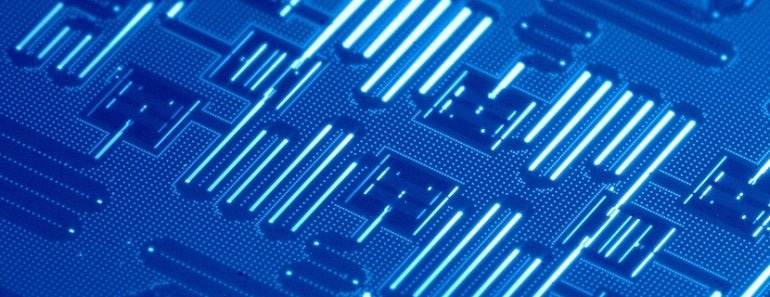Aug 10 2017
A research carried out by Scientists from the University of Surrey headed by Dr. Steve Chick and Professor Ben Murdin has achieved major advancement in the field of quantum computing.
The Researchers were successful in controlling phosphorus atoms inside silicon crystals and in making them “dance” by regulating their size and shape. It is known that prevalent digital computer circuits are developed using silicon.
 (Credit: The University Network)
(Credit: The University Network)
The technique employed by the team is known as “surface code” quantum computing, where multiple items are positioned in a fixed framework of silicon crystals and the dancing movement of the atoms is used to regulate their interaction.
The two main reasons for the trendsetting nature of the study are as follows.
First, it shows that common and popular materials, with the ability to increase manufacturing efficacy and to minimize the production cost, can be used for developing quantum computers.
Second, as silicon crystals are being used, the quantum as well as digital computers can be integrated in a flawless manner.
The functioning of digital computers is dependent on switches also known as “bits” that exist either in a switch-on state or a switch-off state. In contrast, in the case of quantum computers, the switches are called “qubits,” or quantum bits, formed of a single atom as against a metal switch. The benefit of qubits over traditional bits is the fact that qubits can be in three states, namely, off, on, or both on and off, thereby exponentially enhancing computing power by capitalizing on the quantum paradox called “superposition.”
What is superposition?
“Superposition” is the condition under which a particle exists in all probable states of existence at its disposal. Only when the particles are observed do they exit the superposition state and enter one of the probable states.
Erwin Schrodinger, a Physicist, developed the prominent “Schrodinger’s Cat” thought experiment to investigate superposition, where a cat, with an equal probability of being dead or alive, is imagined to be inside a box. Before the box is opened and the state of the cat inside the box is confirmed, the cat is both alive and dead at the same time.
The phenomenon of superposition can also be likened to the boggart from Harry Potter and the Prisoner of Azkaban, which is a shape-shifting monster that assumes the structure of anything the individual viewing it most fears. As J.K. Rowling writes in the voice of Professor Lupin, “the boggart sitting in the darkness within has not yet assumed a form. He does not yet know what will frighten the person on the other side of the door. Nobody knows what a boggart looks like when he is alone, but when I let him out, he will immediately become whatever each of us most fears.”
The Researchers are fascinated whether Rowling’s idea was stimulated by quantum superposition as it is a precise depiction of the phenomenon. Similar to a boggart, subatomic particles occur in an ethereal state of probability when they are not being observed. Yet, once they are observed, a particle will exit the state of superposition and assume a homogeneous material form.
As described above, a solid example of the phenomenon of superposition is in quantum computing.
Implications of the Research
Chick and Murdin are of the view that when silicon crystals are used in quantum computing, the compatibility between quantum and digital computers will be enhanced.
“One of the big near-future challenges for quantum computers is to make them easy to integrate with digital. Quantum computers would benefit from onboard digital microprocessors for many different reasons, especially to make quantum computers easier to program. If the materials you make quantum computers from are the same as we currently use for digital computers, then you could literally make both types of computer in the same chip — saving space, time, and cost.” Chick and Murdin stated to The University Network (TUN).
One of the main things hindering quantum computing is the cost. Although few quantum circuits and quantum computers have been developed to date, they are generally formed of exotic and costly metals. However, if the money spent to develop quantum computers is considerably reduced, then large-scale manufacture of quantum computers will be possible.
“By using more common and popular materials, it lets us stop worrying about whether our computers will be compatible with digital computers in the future,” Chick and Murdin stated to TUN. “That will effectively make it easier and cheaper to obtain quantum computers once they are well developed enough to be manufactured.”
Upon being questioned as to what is in store in the field of quantum computing henceforth, Chick and Murdin stated that “Nobody knows when (or if) quantum will overtake digital in raw numbers. Most researchers currently think that even if quantum computers are outnumbered 1000:1, they will still make a huge difference to people’s lives. Some companies like IBM have suggested that we will first see widespread use of quantum computers shared between many users over the Internet, the way current digital servers are used.”
Chick is already fascinated by the probabilities of the dancing atoms.
My favorite thing about this work is the mind-bending way these little guys do multiple jobs at the same time, and it makes me look forward to new ways of harnessing nature to do what we want it to, and new exciting physics problems to solve on the way!
Dr. Steve Chick, The University of Surrey